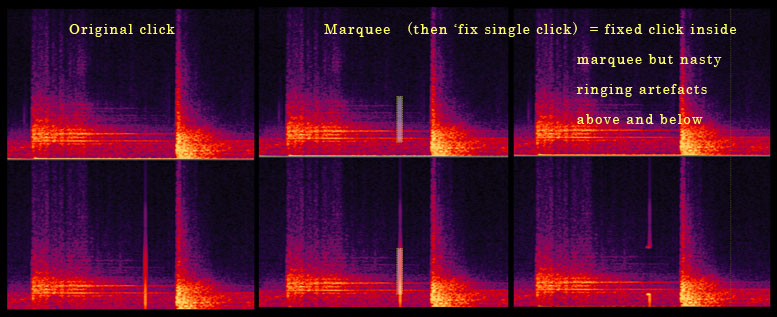A good representation of spectral techniques in noise reduction is Cedar Retouch.
http://www.cedaraudio.com/downloads/cambridge_handouts/retouch.pdf
Every sound or noise has a spectral "fingerprint" and a record click is very different from a tape splice.
Using these techniques, one can even remove the squeak of a piano pedal without harming the music,
using "photo-shop" like tools to paint out the offending noise.
I was at one post-production house here in Hollywood where they played me a track from a boom
microphone. The track had a door slam along with the actors dialog.
First, they removed the door slam from the dialog, and placed it center channel where the actor was visually.
Then they took the same track, but removed the actors voice from the door slam,
and placed that screen right where the door was! Two separate tracks of audio from a mono source.




